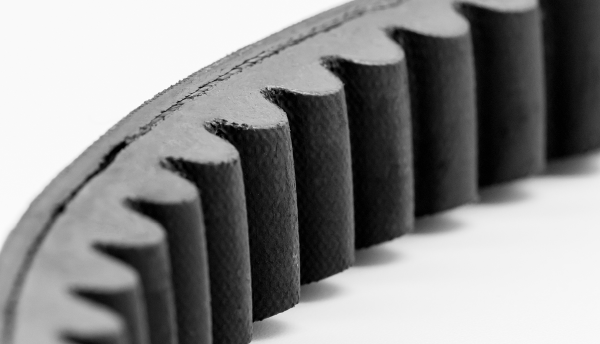
Renault, Toyota and Volkswagen led a 0.9% November gain in European car sales, according to industry data published on Tuesday, pulling ahead of Fiat, General Motors and Ford in a slowly recovering market.
IHS Automotive forecasts that the total 2013 build for Europe is expected to reach 19.1 million units, down 1.1% compared with total 2012 build. In the midterm, European demand is showing signs that warrant steady growth in production. We expect a slow recovery, though, with 2014 build above the 2013 level by only 3.0%.
While automakers and suppliers are hoping these are the first signs of a stabilizing recovery for Europe, here is a look at what some of the key challenges, opportunities and trends are likely to be for the European market in 2014.
*Increasing technology sharing between OEMs will pressurise some suppliers…
The last twelve months has seen a number of technology sharing agreements inked between OEMs; Peugeot Citroën & General Motors; BMW & Toyota; and in the last few weeks, Aston Martin and Daimler. Although this means saving for OEMs, it has potentially massive implications for suppliers going forward.
These agreements to share technology allow OEMs to apply even greater pressure on suppliers to drive down prices and margins further as companies compete for single huge contracts across multiple programmes on a single platform. A sign of how this might play out was seen when PSA unveiled its new EMP2 platform for C-, D- and E-Segment vehicles at the start of the year, which is believed to be the basis for new models that Peugeot-Citroen and GM plan to start producing together from 2016. The new platform will replace two previous ones thanks to its modular nature.
December saw reports that some suppliers were threatening legal action against the PSA-GM joint purchasing operation (JPO). While around EUR60 million (USD81.5 million) of savings is said to have been generated so far, as the scale of the alliance has contracted during the past year, there is little expectation that the USD1 billion to be generated by each company will be achieved. Nevertheless, it seems that the JPO is still looking to squeeze component suppliers as much as possible.
*…but other suppliers down the chain might see an opportunity
While tier ones might be scrambling for a decreasing number of mega-contracts, suppliers down the chain might potentially benefit. This month saw Continental and Schaeffler announce that they were increasing joint-purchasing in order to reduce cost and improve efficiency. The joint purchasing by the two major German suppliers is expected to reach EUR15bn (USD20.3bn) this year. The combined efforts could represent as much as half of total purchasing spend for the two companies; In 2012, Continental procured raw materials and components worth EUR24bn (USD31.7bn) while for Schaeffler the figure was EUR6.4bn (USD8.5bn).
This is expected to help suppliers who qualify as premium suppliers for these two key component makers. The premium suppliers will not only collaborate with Continental and Schaeffler on various projects but will also get an increasing share of their supply contracts. This arrangement is also expected to help Continental and Schaeffler create a reliable common supplier base. For those who qualify, this could mean a measure of stability and security to the traditionally temperamental lower tiers of the supply base.
*The United Kingdom will continue to buck the trend
While Europe has generally stagnated, the UK is having a somewhat of a renaissance in light-vehicle production. IHS Automotive anticipates that overall vehicle production in the country will continue to expand over the next few years, supported by the investments being undertaken in passenger car production by not just Nissan and BMW, but also Jaguar Land Rover, Volkswagen Group and General Motors. IHS Automotive expects passenger car output in the country to reach 1.49 million units in 2013, an improvement of around 1% y/y, although a far larger increase will be recorded next year and greater gains will be seen in the second half of the decade.
While the UK has had a manufacturing base for light-vehicles, the local supply base is much smaller than those in other major European nations. This has created an opportunity for suppliers to invest with the potential for strong early growth as the supply base is built up.
*Lightweighting arrives in America, and will need European expertise
European parts makers have a chance to expand their North American business in the coming years, supplying technologies they may have perfected in Europe to meet fuel economy regulations there, says Doug Cain, CEO of Mubea North America, the US arm of the privately owned German supplier of springs and metal components.
Cain just opened a USD60 million expansion of Mubea's operations in Kentucky that illustrates the opportunity. The new plant is a continuous flexible rolling mill that can vary the thickness of a coil of steel to multiple specifications. That means that a single metal component can be produced in multiple thicknesses, allowing for as much as one-fifth of its weight to be eliminated.
Mubea introduced the process nearly a decade ago in Germany, but found North American customers uninterested in weight reduction for fuel economy, Cain told Automotive News. But surging US interest in fuel efficiency prompted Mubea to move ahead, building the plant in just 18 months.
"In Europe, it has been an easy sell for the past several years to spend a little more to take weight out of the vehicle," Cain says. "That hasn't been the business case here until recently."








